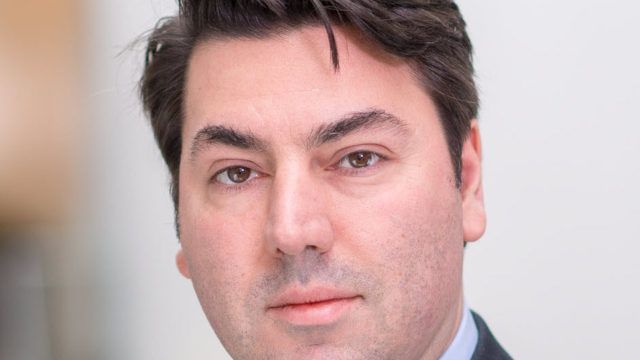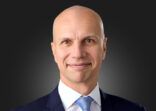“Vanguard is looking to build scale [in Asia] with high quality alpha products that can supplement investors’ existing strategies,” Daniel Shaykevich, principal and co-head of emerging market and sovereign debt fixed income group at Vanguard told FSA on a recent visit to Hong Kong.
Philadelphia-based Shaykevich argued that Asian investors need to look beyond the region to generate better returns.
“We’re making efforts to make our top specialist strategies available to investors outside the US, and believe that the Ucits platform is the best way to do this,” he added.
Although Vanguard is known as world’s leading passive fund provider, $1.3trn of its $5.6trn of its AUM is actively-managed, according to the firm’s website.
Vanguard’s push into Asia is, arguably, long overdue.
It has six ETFs authorised for sale to retail investors in Hong Kong, including a US and developed Europe equities product, but no actively-managed funds, according to the Securities and Futures Commission (SFC) website.
The offerings available in Singapore are more in number and variety, but all are passive funds, according to the Monetary Authority of Singapore’s website.
The firm also has a limited presence in China compared with rivals such a Blackrock. Vanguard, despite a recent tie-up with Ant Financial to form an investment advisory joint venture, has struggled to form a clear strategy. The abrupt New Year departure of Charles Lin as Vanguard’s head of Asia reaffirmed that lack of clarity and perhaps extended it to the region as a whole.
The latest initiative is focused on making existing funds available to Asian investors, rather than creating new products.
“However, it is essential that clients understand the risk profile of funds that they incorporate into their ‘do-it-yourself’ investment plans, and we intend to offer ‘true-to-label”, alpha-generating specialist products that are nevertheless constrained from diverting too far away from their benchmark index,” said Shaykevich.
EM bonds for alpha
One of these specialist areas is emerging market debt, which is a category that has expanded significantly during the past decade, with new issuers from sub-Saharan Africa, the Middle East and the Caribbean offering diversification away from traditional Latin American and post-Soviet Union borrowers.
“The sector is far more diversified than a few years ago, and that helps avoid making concentrated bets,” said Shaykevich.
Country allocation and then security selection to identify best relative value within a sovereign’s yield curve are central to the Vanguard strategy, with paired overweight-underweight trades – and even long-short positions created through derivatives – deployed as “dozens of individual strategies”.
For instance, Shaykevich is overweight African issuers such as Ivory Coast, which is balanced by an underweight position in Turkey.
He is “generally constructive about Asia credit”, especially higher quality state-linked China names and Indonesia sovereign issues, “but the region is fully-priced, reflecting the preference of local investors”.
Vanguard’s emerging market strategy has had failures, notably a long position in Argentina bonds last summer before their meltdown following the country’s surprising presidential election result, and underweight exposure to high-quality borrowers.
Yet, Shaykevich insisted that holdings in euro-denominated bonds with foreign exchange and interest rate risks hedged, and an overweight to Mexico based on a recovery theme, as well as “dozens of other successful strategies” more than compensated for those failures.
“In general, we are now wary of fully-priced, high quality names that have little upside and are vulnerable to deterioration, and favour weaker names that have room to improve credit ratings but whose prices don’t reflect that potential,” he said.
Risk assets in low return environment
Shaykevich’s stance is predicated on a cautious market outlook for this year, which Vanguard believes will be challenging for asset returns after a long period of economic expansion.
Earlier this week, Qian Wang, the firm’s chief economist for Asia-Pacific, warned that “as global growth slows further in 2020, investors should expect periodic bouts of volatility in the financial markets, given heightened policy uncertainties, late-cycle risks, and stretched valuations”.
“The chance of a large drawdown for equities and other high-beta assets remains elevated and significantly higher than it would be in a normal market environment. High-quality fixed income assets, whose expected returns are positive only in nominal terms, remain a key diversifier in a portfolio,” she wrote.
“Returns over the next decade are anticipated to be modest at best,” she added.
According to Shaykevich, the base case is a slight pick up in global economic growth this year and moderation of trade tensions, but there are “dual and opposite risks of weaker growth or higher inflation”.
Nevertheless, Vanguard’s enthusiasm for emerging market bonds compared with its subdued expectations for risk-assets might appear incongruous.
However, Shaykevich argued that emerging market debt “provides some of the best risk-reward features of any asset class”, and emphasised the high Sharpe ratio (a measure of risk-adjusted returns) of the asset class.
The JPM EMBI Global Diversified Index has a Sharpe ratio of 0.67 over three years, much higher than the broadly-based Bloomberg Barclays Global Aggregate [bond] Index (01.4) and better than the MSCI Emerging Markets [equity] index (0.52), but much lower than S&P 500 (0.91).
Active vs passive
During market downturns, an actively-managed fund might also perform better than a passive fund: the objective would be to generate positive absolute returns by diverging from the index when the market overall is falling.
That might explain why Vanguard is promoting active emerging market strategies rather than a passive fund. Its actively-managed Emerging Markets Bond Fund* generated a 9.76% annualised return in the three years to 31 December 2019, according to the fund’s fact sheet, compared with a 5.98% annualised return by its Emerging Markets Government Bond ETF*, according to FE Fundinfo data.
(*the funds are not available for sale to retail investors in Hong Kong and Singapore)

















